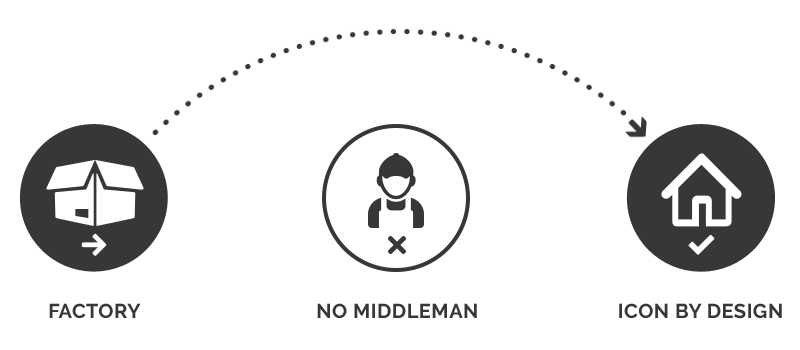Icons of Design: Charles & Ray Eames

What did people have in their homes before good design became affordable? In today’s world, where advances in technology and man-made materials have created an affordable mass-market of design, it’s hard to imagine a world where good design was the reserve of the elite. This is the world that the iconic duo Charles and Ray Eames grew up in, and were determined to change; democratising design and paving the way for today’s consumers. In this article, we’ll learn why function should be the first consideration of every designer, and why beautiful design is not always better design.
Having met at design school in Michigan, Charles and Ray married and moved to California, where Modernism in all its forms had really taken hold. Emerging out of a sea of Bauhaus, the Eames’ rejected the idea that good design was aspirational; only to be appreciated by those educated enough to understand it. Instead, they were determined to make designs that listened to people’s needs: “we want to make the best for the most for the least”. Their affordable design philosophy was backed by curiosity and ingenuity. Before WWII broke out, Charles had been experimenting in a new material called Plywood – a versatile material that was incredibly cost-effective to manufacture. With a change in society’s attitudes and people’s needs after the War, Eames released the LCW (the Lounge Chair Wood), a lounge chair set whose now-iconic form was made possible by Plywood. With attractive and accessible designs, Eames’ furniture appealed to a new generation of young, hungry executives, eager to embrace design at an affordable price-point.
The LCW, released in 1945, was a groundbreaking piece of furniture
Curiosity was at the heart of everything Ray and Charles created. Cross-disciplinary designers, they always wanted to understand the driving force behind everything they created. With a particular knack for pithy quotes, Charles Eames instructed fellow designers to “never delegate understanding.” Eames Demetrios, the grandson of Charles and Ray, and the custodian of their legacy, recalls one of the multimedia design pieces his grandparents did for IBM in 1961:
“They didn’t say to the mathematicians, ‘Tell us what to say and we’ll make it look pretty,’ which is often what designers do. Instead, they wanted to deeply understand for themselves so that the design of the exhibition could come directly from their own learning and understanding.”
Charles & Ray Eames, sitting on one of their iconic Eames Lounge Chairs.
In 1999, Time Magazine hailed the LCW as the best design of the 20th Century – quite an accolade for a chair that was first released in 1945. They “placed function at the heart of their work – but fun was never far behind.” Their dedication to making things more functional, while at the same time making things more pleasing, is perhaps the key to Eames’ success: “what works good is better than what looks good, because what looks good can change, but what works good will still work.” It’s that focus on designing for “the universal part of yourself” that has allowed their products to stand the test of time – and still look as current today as they did when they were first released.
Charles Eames described his design methodology as a relationship between himself and the consumer: “the role of a designer is that of a very good, thoughtful host anticipating the needs of his guests.” It’s this humility that the Eames were famous for, and is reflected in their designs. Once an Eames design was released to market, the designing didn’t end there. Constantly refining based on customer feedback, every release of a product documented an evolution of society and its needs. This host-guest relationship lies at the heart of Icon By Design. It runs through our customer service and in-store experience; where our staff are encourage to interact with visitors like they would with guests in their own home. It makes for a pleasant and unpressured environment, where you are encouraged to discover and interact with the furniture at your own pace. In terms of our products, our designs are very much based around function; we ensure that every piece is able to fulfil its intended purpose neatly and beautifully. Much like Eames’ creations, our products are inspired by timeless designs – adapted for the 21st century home. “To be realistic,” Charles Eames once said, “one must always admit the influence of those who have gone before.” Eames, we salute you.
Sources:
http://www.bbc.com/culture/story/20171218-charles-and-ray-eames-the-couple-who-shaped-the-way-we-live
https://www.theatlantic.com/entertainment/archive/2015/11/charles-and-ray-eames-beyond-the-chair/415764/
http://thepeakmagazine.com.sg/lifestyle/a-fine-legacy/
http://inoutdesignblog.com/feature/interviews/chat-in-a-chair-eames-demetrios/
Recent Posts
-
1
-
2
-
3
-
4
-
5
-
6
-
7
-
8
-
9
-
10






 1300 715 719
1300 715 719 Showrooms
Showrooms





















